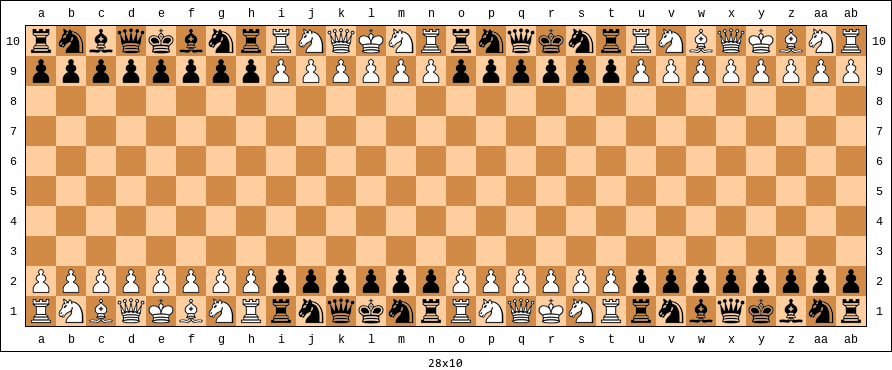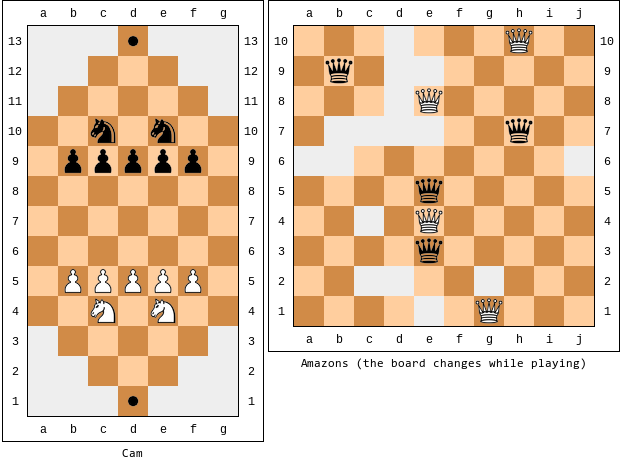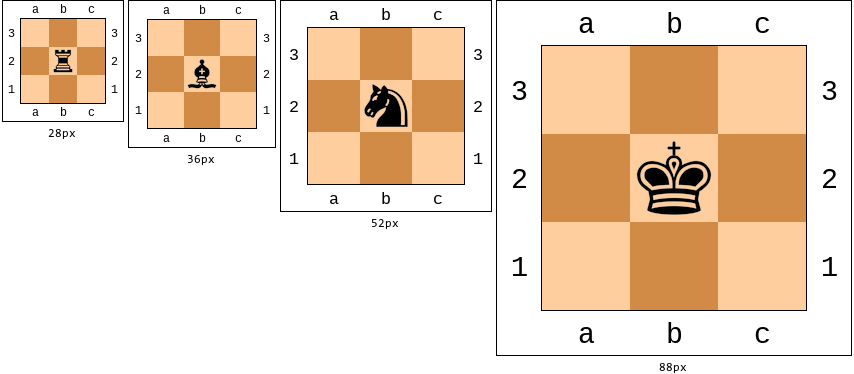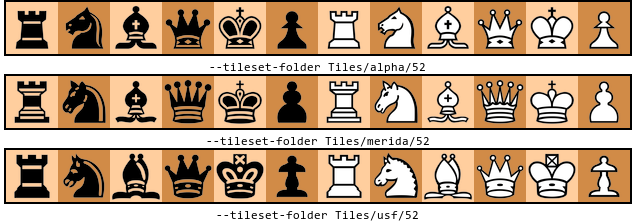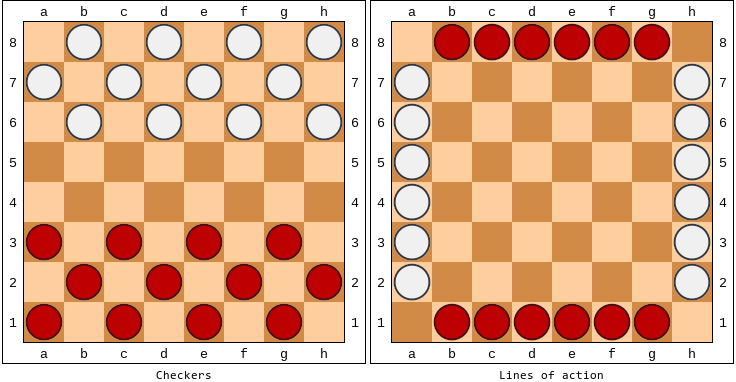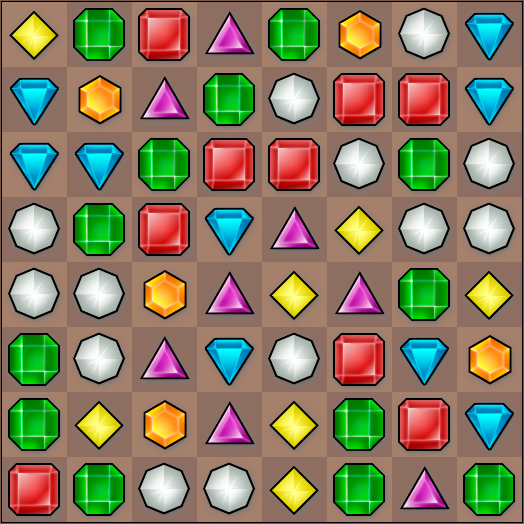Tileboard is a small command-line program that generates board game diagrams. You write positions in FEN and a image comes out ready to be posted in a blog or any other media.
For example, the initial chess position:
$ Tileboard.py rnbqkbnr/pppppppp/8/8/8/8/PPPPPPPP/RNBQKBNR chess.pngGenerates the following image:
I've used Python 3.5.0 and Pillow 3.1.0 to develop Tileboard. It's likely that it will work with older versions of Python 3.x (back to 3.3 or so) or with Pillow 2.x.
Python 2.x is not supported.
Although the basic syntax is: Tileboard.py position filepath, Tileboard
has a metric ton of command-line options to customize the output.
Instead of a boring list (see --help), I'll just put example screenshots
in the readme with the command-line options that generated them.
Let's start with pretty colors. Tileboard is easily themable. The following colors are copied from one of my favorite chess programs, Lucas Chess.
To mark interesting positions, available piece moves, or other situations on the board you can place dots and crosses in any given coordinates:
The FEN notation is extended in various useful ways. For example, you can use any number of board rows or columns instead of 8x8. From 1x1 up to any size. It's also possible to use a different number of rows and columns.
Here are some small chess variants:
As well as a (completely made-up) board that
goes beyond z and 9 in the borders:
Another interesting addition to the FEN notation is that you can use zeros to represent holes in the board. This makes it possible to draw games such as Cam or Amazons which use irregular boards:
Note: you can skip trailing zeros in a given position.
For example the positions: 00ppp0000 and: 00ppp are identical when the
board has 9 columns.
The final image size depends on the size of each piece in the board. Tileboard can use any size as long as all the pieces are squares of the same size. The short version is: it can generate small images for your blog or huge images that won't even fit on a monitor.
Everything else in the image, such as the outlines, border coordinates, the checkerboard or the crosses and dots is scaled automatically:
Included in the distribution are three high-quality tilesets for chess, with sizes ranging from 20x20 px to 300x300 px made by Eric de Mund for the Jin chess program.
They look like this:
Tilesets in Tileboard are not hardcoded. They just follow a very simple rule.
Each letter in a FEN position is translated to a filename, prepended with
l or u depending on whether it's lowercase/uppercase in the position.
For example, the /Source/Tiles/merida/42 folder contains the files (those are just .png images without the extension):
lb lk ln lp lq lr ub uk un up uq ur
If a letter has no different lowercase/uppercase representation (e.g: # or
unicode symbols), no prefix is needed. No extension either, because Pillow
detects it (you can mix formats).
Here are two examples (the tiles are included in the /Tools/checkers folder):
In fact, you can think of Tileboard as a paint program that draws sprites instead of pixels, with a single layer. Here's a more crazy example (the tiles are included in the /Tools/freegemas folder):
The only limitation on how big the output image can be is the memory available. Internally, Tileboard draws everything using offsets on a single image. It caches pieces, dots and crosses.
In practice, this means that on a decent machine you can draw huge images without issues. I've used it to draw at resolutions up to more than 20.000x20.000 px.
As a guideline, generating a blank board at 1000x1000 px each tile takes 3 seconds on an Intel i5 3.5 ghz and needs about 400 mb of memory resulting in a 9040x9040 px image.
$ Tileboard.py 8/8/8/8/8/8/8/8 blank.png --tileset-size 1000I deliberately avoided adding features that would bloat the program if they could be done in a single command in ImageMagick. One such example is text below the images (e.g. "White to play and win").
Almost all of the images in this README have labels below them. Take a look at generate-screenshots.sh for the script that generated them. I'm not proficient in either bash or ImageMagick but it worked fine.
Information and error messages are written to stdout and stderr respectively, using the current platform newline format and encoding.
The exit status is 0 on success and 1 on errors.
Tileboard is tested on Windows 7 and 8 and on Debian (both x86 and x86-64).
The tilesets and output images can use any format that Pillow supports.
This program is finished!
Tileboard is feature-complete and has no known bugs. Unless issues are reported I plan no further development on it other than maintenance.
Like all my hobby projects, this is Free Software. See the Documentation folder for more information. No warranty though.




